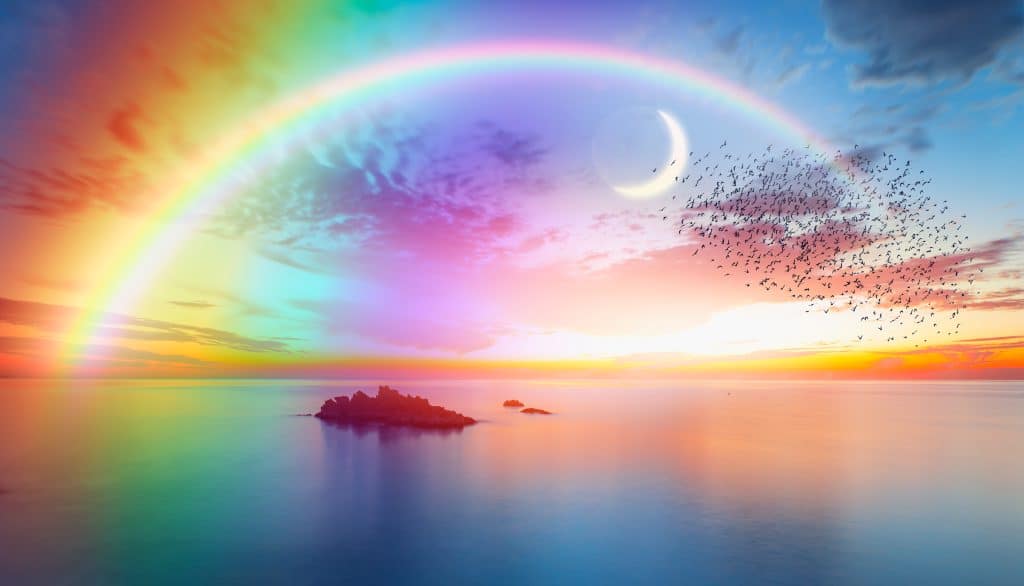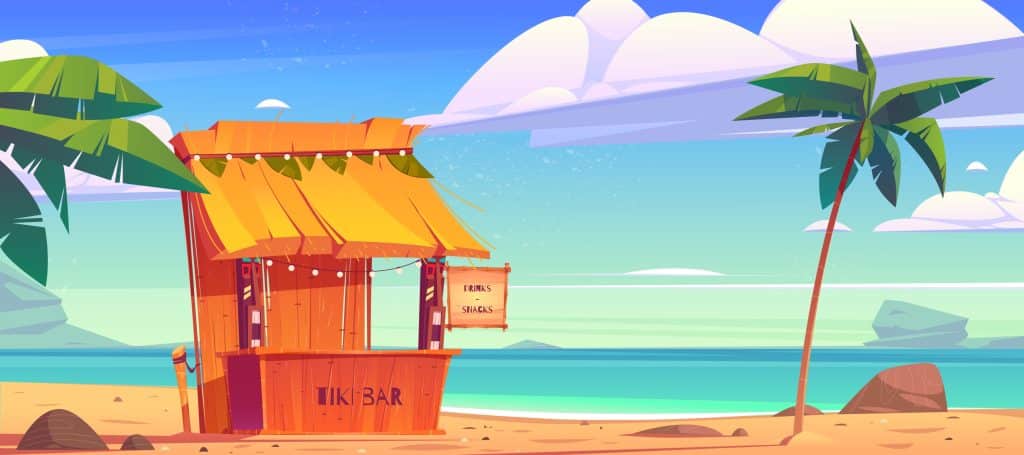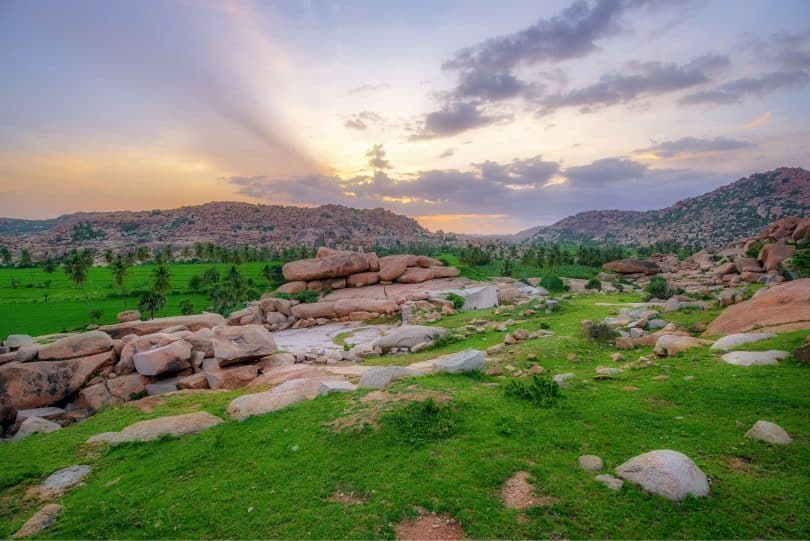Every so often, on a voyage round the world, you stumble across a place that – in the words of many cannabis smokers – ‘hits different’. A place that fills you with awe, inspiration and peace. A paradise. During my travels I’ve found few locations that I would describe as a genuine paradise, one where you’d drop everything and live there simply for the peace of mind it brought you. But it’s becoming evident to me that these sorts of places are becoming less and less common.
We no longer live in the Golden Era of the 60s and 70s, where travel was a VW camper van, a bunch of hippie friends and the free world at your fingertips. With tourist spots overpopulated and commercialized, paradise is now just a heading on a travel agent brochure. Not too recently, however, existed a true paradise. In the south of India, in the once incredibly wealthy village of Hampi, there lies the remains of hippie island. In 2020, this area – amongst the palm trees and explicable rock formations – was destroyed. Let’s find out why.
What is a Hippie Paradise ?
Defining the concept of a hippie paradise is basically impossible. It seems fitting to use the common and exhausted phrase: beauty is in the eye of the beholder. It’s very easy for one person to find an area of the world relaxing and beautiful, whilst another finds it boring and pretentious. Yet, around the world, many locations are labelled – in one way or another – as a hippie paradise.
In fact, it would be hard to mention one country on this planet that, within it, did not have some community that could be given that name. Another factor to mention is: who gave the hippies all the power? Why do they get to choose what a paradise is and what it’s not? Well, in this context, I believe that hippies stand for the traveler who wants to leave their own land and – peacefully and respectfully – find out more about other worlds.

Of course, very often, travelling does not happen like this, and instead it’s used for cheap booze and drugs – without any real consideration of the people or the culture. But, in its ideal sense, a hippie paradise is a place for anyone to come and be around others – from various backgrounds – without any judgement, disrespect or hate. The search for this was, some believe, what began the hippie trail trend in the 60s and was the birth of the lonely planet guides later down the line. Open Skies Magazine writes:
“This was a trek that saw tens of thousands of young people attempt to find enlightenment, inner peace, or just a rollicking good time. These were the hippies, the overlanders; young men and women who wanted to understand the world and their place in it.”
But what are these supposed places that so many people would travel far and wide to explore? Well, one of them is called hippie island but has – tragically- been recently demolished. It is no surprise that it exists in one of the most spiritual and diverse countries in the world: India.
Hampi’s Hippie Island
It’s always important to remember how large India is when discussing it. It is the 7th largest country in the world and has the second largest population, after China. It has every landscape imaginable – beaches, jungles, mountains and desserts. Down in the south of India, in the state of Karnataka, sits the ancient village of Hampi. This place was once home to some of the most expensive and luscious jewels and treasures in the world, and was one of the most popular trading spots. In fact, in 1500AD Hampi was the second largest city in the mediaeval world.
Thanks for making your way over. Subscribe to our Cannadelics Weekly Newsletter for regular updates straight to your email, along with great deals on awesome merch including marijuana flowers, vapes, edibles, smoking devices, and cannabinoid compounds. Check through the options, and pick what works best for you!
It is believed that Hampi, along with the rest of India, had around 40% of the world’s resource wealth in the 17th century. Then, of course, England’s empire came and took it all. Nonetheless, you cannot take away its beauty. Hampi now is considered one of the most extraordinary places to visit – not only in India – but in the world. In 2019, the New York Times voted it as the second must-see place to visit on earth. Now only is it full of ancient ruins, palm trees and monkeys but it also has incredible rock formations that leave you scratching your head as to how they got there. It still remains untouched and spacious, giving Hampi a true peace and tranquillity. The National News writes:
“It’s hard to think of another sight in India this significant yet still relatively little-known or visited. Although Hampi became a Unesco World Heritage Site in 1986, tourism hardly noticed… Hampi’s ruins stand amid low granite hills and outcrops dotted with surreal, house-sized boulders. Between them stretch dense plots of banana trees and sugar cane still cultivated by local villagers. It’s a landscape further softened and greened during the monsoon.”
Plus, across the river from the old Bazar, until a year ago, sat its hippie island. On the water, looking out at spewed out boulders and ancient ruins, was a row of local-owner bars, hostels and restaurants. It became well known for its cheap prices, amazing Indian food, climbing spots, exotic animals, beautiful sunsets and access to mind-opening drugs. Hampi is a sacred place, meaning alcohol is not sold in the majority of the bars on the other side of the river but on hippie island it was a different story.

People would come here with the aim to stay for a few days, and never leave. With a moped, some easily purchased hash and a cold beer – it really was paradise. In fact, it was possible to purchase all types of drugs too, not just your usual hash. Magic mushrooms were sold by street dealers, as well as bhang lassis in restaurants and special shakes containing the famous psychedelic Hampi seeds.
“Seeds of the morning glory plant have been used since ancient times in ritual ceremonies. For example, the Maya used the plant in a beverage to facilitate communication with the spirits to predict the future or to come to an understanding of otherwise incomprehensible events.”
There you were, in the most spiritual country in the world, in perhaps the most peaceful place in the world. There was, in a sense, no reason to leave. You had found the ‘end of the road’, as the hippie trailers would say. But this all ended in 2020. Xplore writes:
“The supreme court on Feb 11, 2020, released the official order for the demolition of all establishments on Hampi’s Hippie Island (Virupapura Gaddi), without an active license issued by State Government. A short notice period was given to the owners for relocating before the Bulldozers rollover.”
Over 23 establishments and family run businesses were given one week’s notice before being turned to ruin. They were forced to relocate their homes and enterprises. What was once a hippie paradise, was now rubble. The reasons for the demolition was, according to the court, three:
1 – The area falls under the protected zone of Hampi, which therefore penalises any property without a specific licence.
2 – The area hosts ancient monuments and relics and, therefore, any commercial property must have approval from authorities.
3 – The locals in the area were working under a null, void and old licence, called the Panchayat.
However, this does not tell the entire story. There was a slight bureaucratic war going on between hippie island the rest of Hampi and their nearby town of Hospet. Hippie island was offering better rates and far more beautiful locations and liberal experiences than other parts of Hampi and were, therefore, a problem. As more tourists came and the ‘hippie paradise’ reputation began, news outlets were criticising the area for its supposed misuse of drugs and constant raves – all of this, as always, was largely exaggerated. The conservative press were a major reason for the demise of hippie island. In the end, the authorities decided to bring an end to the whole dream.
Hippie Island Now
I recently visited the demolished hippie island, which is now a deserted area of land – nothing of what it was. But, as I explored more, I realized that all hope was not lost. The original configuration may be gone, but many of the establishments still exist on that side of the river. They may be 10-minute scooter rides away from each other, but they are still there, amongst the banana plants.
The families and owners are still the same; surviving after what was an unjust and abrupt end to their original locations. Hampi’s hippie island may now be more of a hippie ‘zone’. They may have demolished the strip, but they could never demolish the soul. Hampi is still one of the greatest places to visit on earth, and one major reason for this is the survival of its hippie paradise aura.
Hello and welcome readers! We appreciate you making it over to Cannadelics.com; where we work hard everyday to bring you fully-rounded coverage of the growing cannabis and psychedelics spectrum. Hang out with us regularly to keep up with everything going on, and sign up for the Cannadelics Weekly Newsletter, so you’re never late on getting a story.









